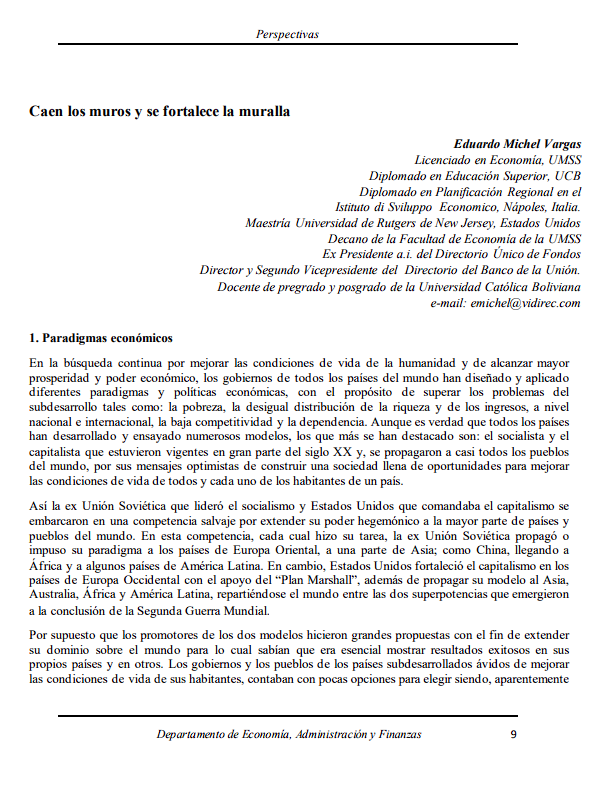The walls fall, and the wall is strengthened.
DOI:
https://doi.org/10.35319/tmr90g72Keywords:
Socialism, Capitalism, Soviet Union, United StatesAbstract
Throughout the 20th century, two economic models dominated the world: socialism, led by the former Soviet Union, and capitalism, driven by the United States. Both promised to improve living standards, but over time it became clear that capitalism achieved greater progress in economic development, competitiveness, and well-being. While socialism failed to create prosperous and sustainable economies, capitalism drove growth in many countries, including the G-7 and the so-called “Asian Tigers.” Eventually, many socialist countries abandoned that system and adopted capitalism after recognizing its effectiveness in achieving development.
Downloads
References
COY, Robert: “Job losses: Is the panic justified?”, BusinessWeek, 22 de diciembre de 2008, Edit. The McGraw-Hill Companies, págs. 022, 023 y 024, Estados Unidos.
Economic and financial indicators, The Economist, 13–19 de diciembre de 2008, pág. 114.
EINHORN, Bruce; FRANCIS, Theo: “Asia breathes a sigh of relief”, BusinessWeek, 22 de septiembre de 2008, Edit. The McGraw-Hill Companies, pág. 032.
KRUGMAN, Paul: De vuelta a la economía de la gran depresión, 2ª edición, Edit. Indugraf S.A., Argentina, 1999, pág. 242.
KRUGMAN, Paul; WELLS, Robin: Introducción a la economía: Macroeconomía, Edit. Reverté, España, edición 2007, págs. M-2, M-3, M-4, M-5.
MICHEL, Eduardo: “El desafío chino”, Revista Perspectiva, Año 8, Nº 1, 2005, UCB, pág. 8.
STIGLITZ, Joseph; BILMES, Linda: The Three Trillion Dollar War, Edit. Norton, edición 2008, pág. 112.
SASEEN, Jane: “The bailout is broken”, BusinessWeek, 9 de febrero de 2009, Edit. The McGraw-Hill Companies, págs. 021 y 022, Estados Unidos.

Downloads
Published
Issue
Section
License
Copyright (c) 2009 Revista Perspectivas

This work is licensed under a Creative Commons Attribution-NonCommercial-ShareAlike 4.0 International License.
La Revista Perspectivas de la Universidad Católica Boliviana, es una revista de acceso abierto, por lo tanto, es de libre acceso en su integridad. Está permitida su lectura, búsqueda, descarga, distribución y reutilización legal en cualquier tipo de soporte únicamente para fines no comerciales, siempre y cuando la obra sea debidamente citada.




